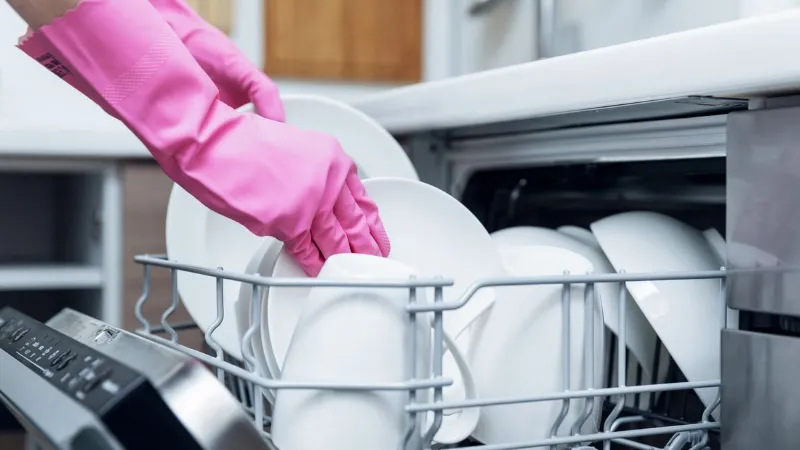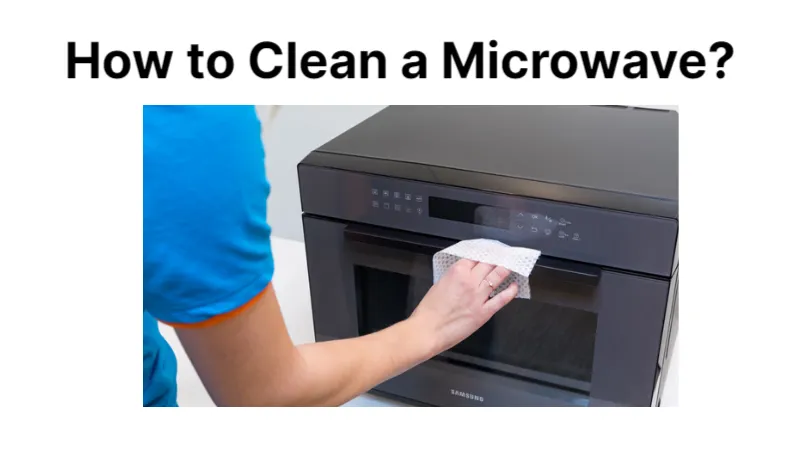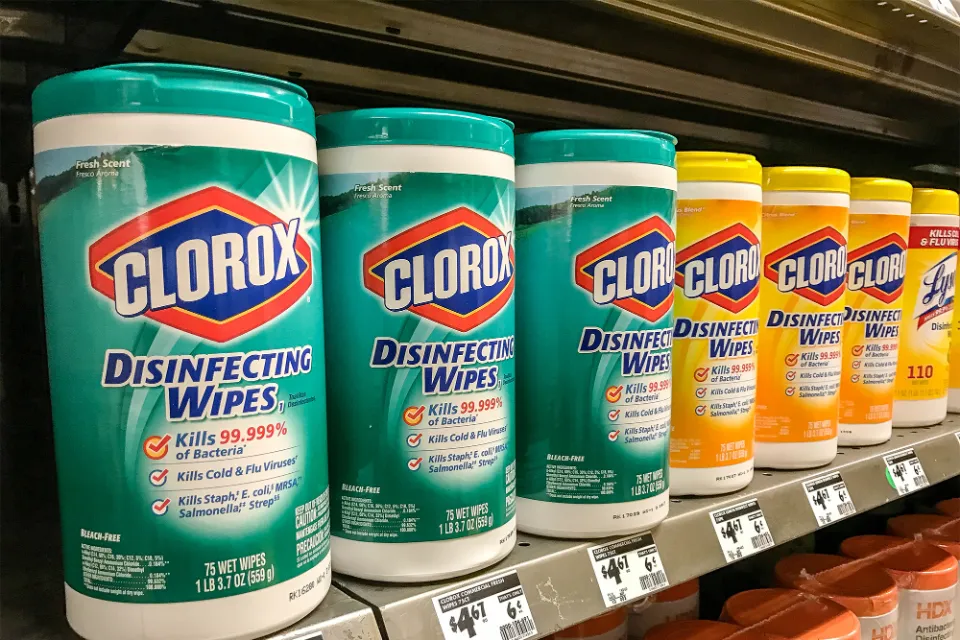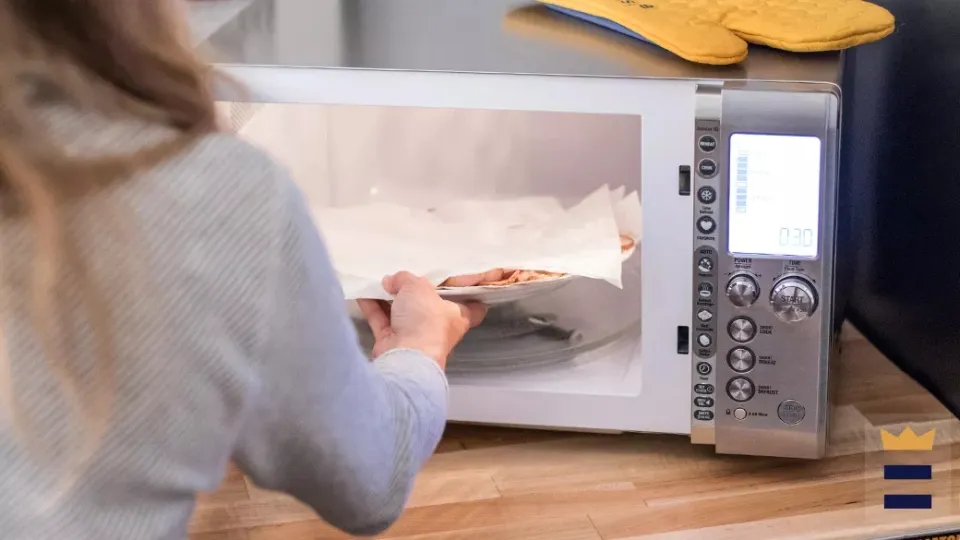How to unclog a dishwasher? Every now and then, we all have to deal with the task of unclogging a dishwasher. You won’t have to repeat the task too frequently thanks to this professional advice’s quickness and ease.
How to unclog a dishwasher? Empty the machine, disconnect your dishwasher, remove all the stagnant water, check to see if the dishwasher drain hose is clogged, remove and unclog the dishwasher drain line, and check to see if your dishwasher drain is clogged.
For more information, keep reading.
How to Unclog a Dishwasher?
Here is an easy step-by-step guide on how to unclog a dishwasher:
Empty the Machine
Make sure you remove all the silverware and dishes from the dishwasher before attempting any DIY dishwasher plumbing. Keep them apart from your other dishes if they are still dirty so you can clean them again after your dishwasher is fixed. For simple access to the dishwasher, you’ll also need to remove the bottom rack.
Disconnect Your Dishwasher
Once all the dishes have been washed and placed in the dishwasher, turn off the power to the garbage disposal and dishwasher. The most crucial step is disconnecting a dishwasher because if the current is still going to the appliance, you risk receiving a severe electrical shock. DIY is all about saving money and remaining safe, and a trip to the hospital would probably cost more than hiring a professional!
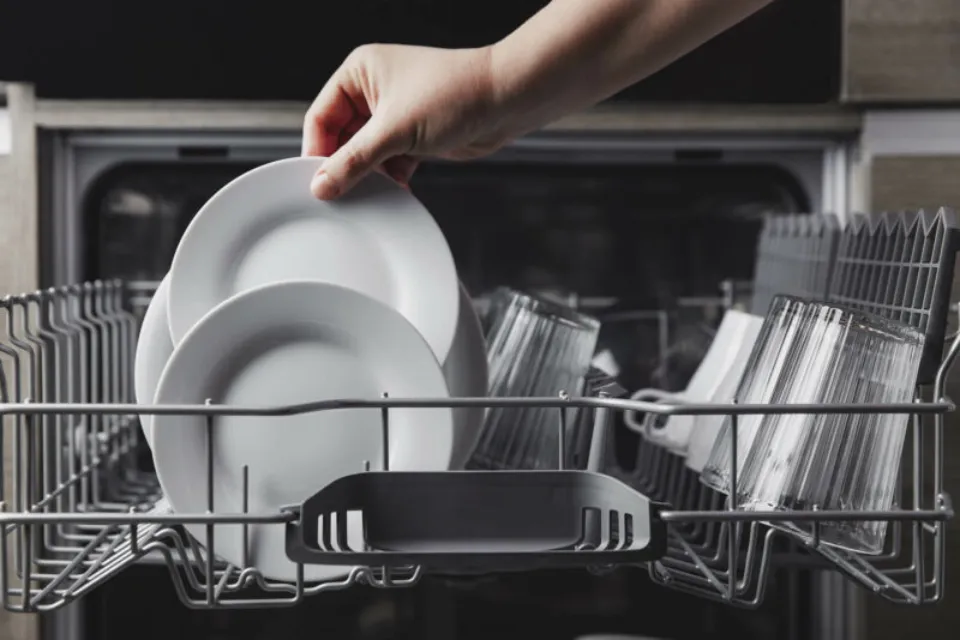
Remove All the Stagnant Water
For access to the bottom pan, remove the dish racks from the appliance. Use towels to soak up water or, if you have a small hand siphon pump on hand, use it. The pump is an efficient and affordable tool to pick up if there is too much water for towels to absorb. For the wet towels, keep a bucket nearby.
Nobody would be critical of you if you assumed that a dishwasher uses a sizable amount of water for each load. After all, one of the largest appliances in your home is usually this one. You may have wondered how much water does a dishwasher use.
Check to See If the Dishwasher Drain Hose is Clogged
Checking the dishwasher drain hose is now necessary. The drain hose is the tube that links the dishwasher with your garbage disposal. The hose is either behind the dishwasher itself or under your sink. To access the hose for the latter, you’ll need to first pull your dishwasher away from the wall.
Remove and Unclog the Dishwasher Drain Line
Disconnect the hose from the machine once you’ve located it. You’ll probably need some pliers to release or remove the clamp in order to disconnect the hose. Any water that may spill will be easier to catch if you place a shallow pan or dish beneath the hose.
It’s time to remove the gunk after removing the hose. You can use commercial de-cloggers or, if you’re feeling particularly crafty, you can create your own using a straightened wire coat hanger. There might be a clog in the dishwasher drain itself if you don’t find any obstructions in the hose.
Check to See If Your Dishwasher Drain is Clogged
At the bottom of your dishwasher, look for the component with a basket-like shape. After removing it with a screwdriver, use a de-clogging tool to clear the drain of any debris that may be blocking it, just as you did with the drain hose. Once everything is reconnected, give it a try.
The kind of crocs you own will affect how you should wash them. Can you put crocs in the washing machine? To avoid damaging your crocs when washing them, you should first read this post.
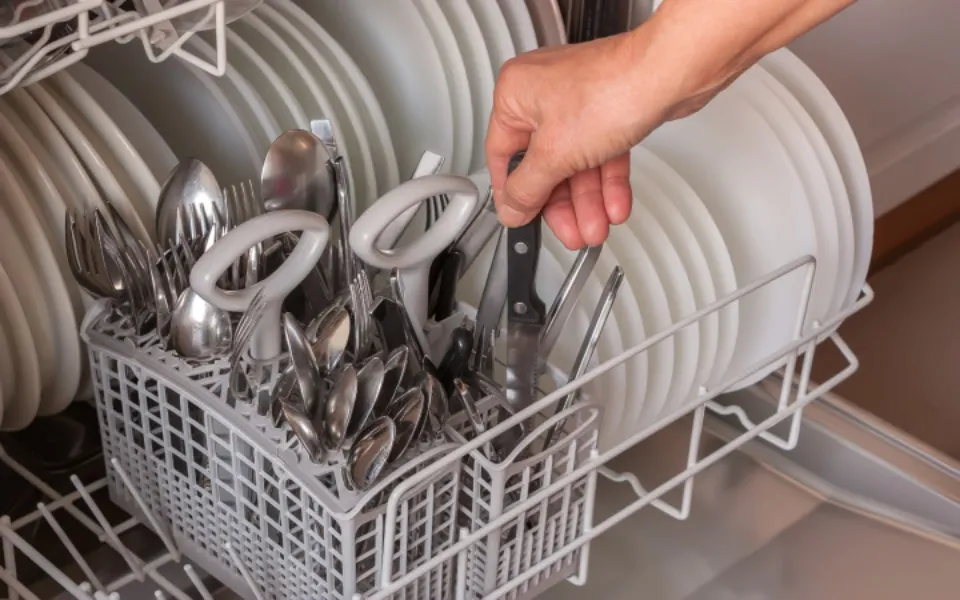
How Do I Know If My Dishwasher Drain Hose is Clogged?
You’ll know your drain is clogged if any of these things happen:
- The dishwasher keeps shutting off, making it impossible to finish a full wash cycle.
- Near the drain, at the bottom, there is a pool of water.
- The garbage disposal is clear, so you know it’s not coming from there, since you checked.
- Food particles have become lodged in the filter.
Suggested reading: Even though Vans shoes are built to withstand the abuse of skateparks, they occasionally need some tender loving care. Here’s the question, can you put vans in the washing machine?
What Causes Water Not to Drain from a Dishwasher?
Your dishwasher may not be draining water for a number of reasons. The drain hose is probably clogged, which is typically due to food scraps. But there are a few additional possible causes.
- Pump Issues: There might be debris obstructing the wash impeller in a pump assembly malfunctioning. The pump assembly or any broken components may need to be replaced.
- Worn Belt: This is uncommon, but if your pump assembly is driven by a belt that eventually wears out, it won’t be able to pump the water out. Check the drive belt in your dishwasher and replace it if necessary.
- Non-Functional Timer: A timer mechanism for the dishwasher should be examined and, if necessary, replaced. If you need help, you might need to contact the manufacturer.
- Faulty Motor: The motor may interfere with a number of elements if it isn’t functioning properly. The motor in your dishwasher should be tested, and if it breaks, it should be replaced. Your manufacturer may be able to assist you in this.
- Drain Valve or the Solenoid: Some dishwashers have a valve that opens to let the water drain out. Although a solenoid controls the valve, the timer is what causes this response. Check the drain valve and solenoid if the timer is operating normally. Replace them might be necessary.
How Can I Stop My Dishwasher Becoming Clogged?
When your kitchen’s regular operation is interfered with, a clogged dishwasher can be a nightmare. The best way to prevent it from regularly becoming clogged is to make sure food waste, grease, and dirt buildup are kept out of the dishwasher and put in the garbage disposal instead.
Just as you would clean a washing machine, your dishwasher will most likely have a cleaning cycle, too, that will hopefully do this job for you. For your dishwasher to avoid getting clogged in the future, run it at least once per month. Read more: How Long Do Dishwashers Last?
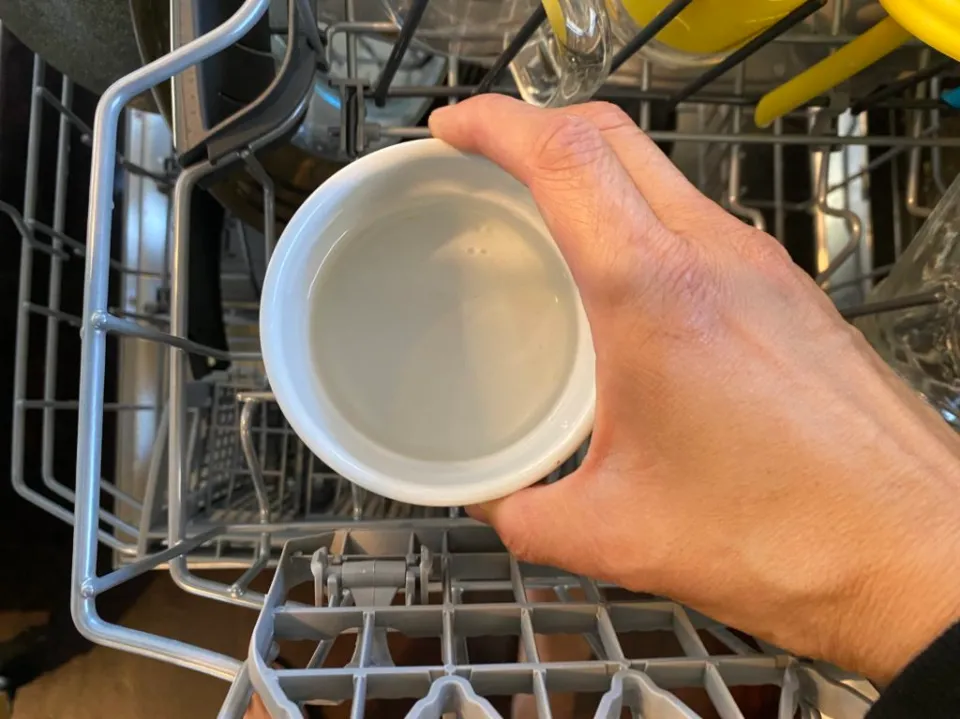
FAQs
How Do You Unclog a Dishwasher That Won’t Drain?
If your dishwasher won’t drain and you’ve cleared the dirty water, looked inside the filter for obstructions, and run a hot wash with vinegar in a standing cup inside, the next step is to mix equal parts vinegar and baking soda (one cup each) into the bottom of the dishwasher. After about 20 minutes, run a second hot wash. This ought to remove the obstruction. If not, there may be a more serious issue, in which case you should contact a specialist.
Can You Put Drano in a Dishwasher to Unclog It?
Drano should not be used to unclog a dishwasher. Drano is a chemical cleaner designed to unclog a shower drain, unclog a bathtub drain or clear clogs in sinks, and it should never be used to unclog a dishwasher. Nor, for that matter, should it be used to unclog a toilet.
Are Chemical Dishwasher Cleaners Better Than Homemade?
Effective homemade dishwasher cleaners only need a few ingredients, some of which you may already have. However, it’s best to avoid using vinegar and baking soda too frequently as this could harm the rubber dishwasher seals. A monthly application of this mixture is sufficient.
Shop-bought dishwasher cleaning products come premixed, but, say environmental companies such as Branch, you should ensure what you buy is regulated since cheap, unregulated products may contain some ingredients that are toxic.
Why is There Water in the Bottom of My Dishwasher?
Water at the bottom of a dishwasher is typically an indication of blockages in the dishwasher filter (the small, round, sieve-like basket), the drain hose, the drain pump, or the air gap. The first step is to drain the water, clean the dishwasher’s bottom and filter, and check for obstructions. If the water doesn’t clear after rinsing, try running the dishwasher. Examine the garbage disposal concurrently. If this is full, the water in your dishwasher may just be a backup, and you may need to unclog the garbage disposal itself. The drain hose or pump may need to be cleared by a professional if neither of these solutions works.
Does Boiling Water Unclog Drains?
Before trying our techniques, you might want to try boiling water as a less invasive way to unclog the dishwasher. Certain clogs can be removed by boiling water! Although it’s a quick and affordable option, it won’t always work. To try this method, follow these steps:
- Boil water.
- While you wait, use a cup or sponge to remove as much of the standing water from the dishwasher as you can.
- Boiling water should be poured down the drain. Give it some time to cool if it stagnates and refuses to drain before removing the water and trying again. You might have to say it several times.
Summary: How to Unclog a Dishwasher?
How to unclog a dishwasher? Empty the machine, disconnect your dishwasher, remove all the stagnant water, check to see if the dishwasher drain hose is clogged, remove and unclog the dishwasher drain line, and check to see if your dishwasher drain is clogged.
For the majority of homes, a dishwasher is a very useful appliance. Therefore, it can be extremely inconvenient when it clogs. Thankfully, it’s usually a simple fix. The connection to the garbage disposal, the drain, or the filter basket are the most likely suspects.
Before attempting our methods, be sure to read your manufacturer’s instructions as they might contain advice that is more tailored to your appliance. However, if you’re in a rut, use our techniques, and we’re confident that your dishwasher will start functioning normally once more shortly.
If you have any questions, please leave a comment. My Prime Home tries to give you the best home improvement information. Don’t forget to share the post. Thank you for reading.
